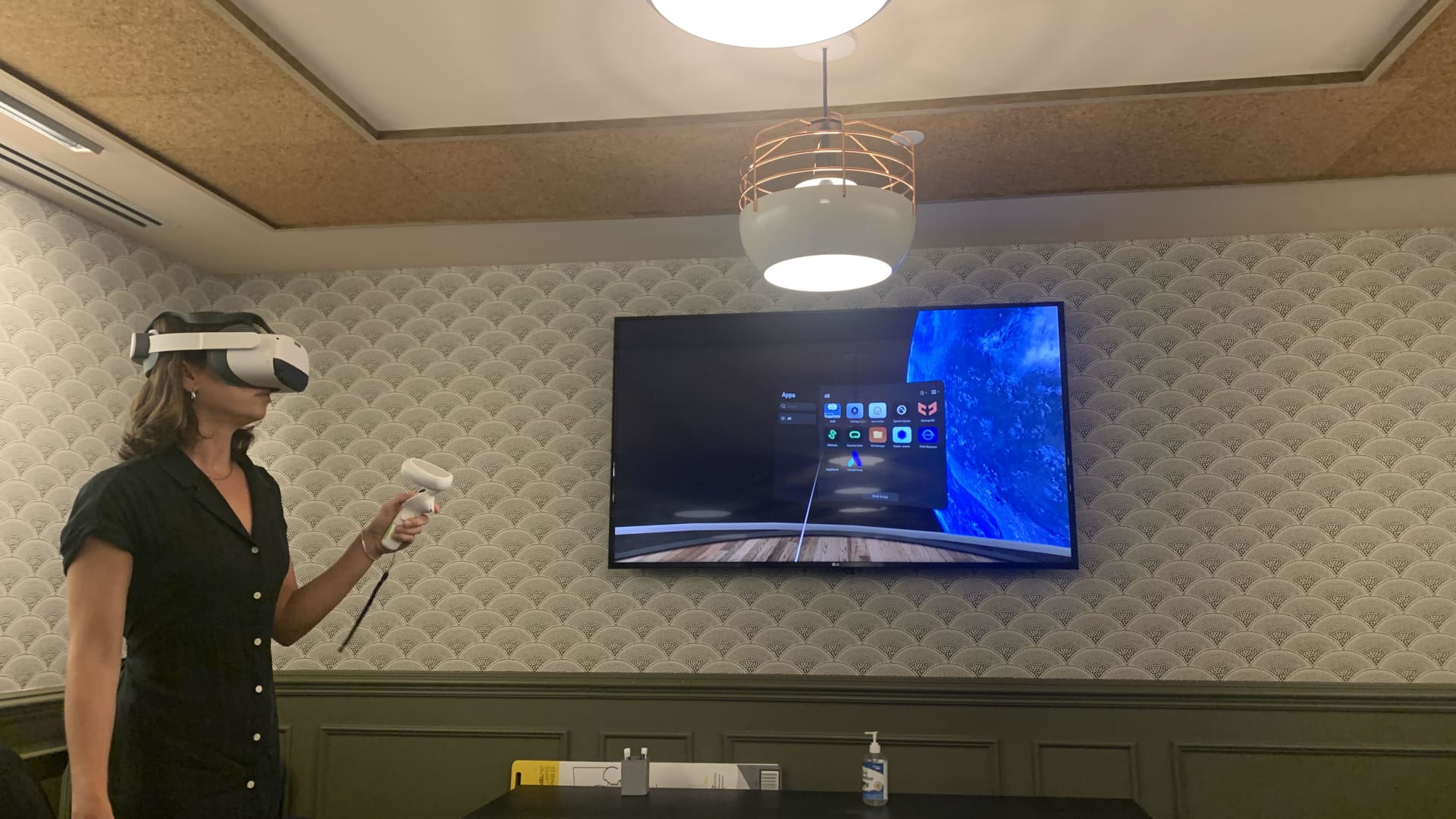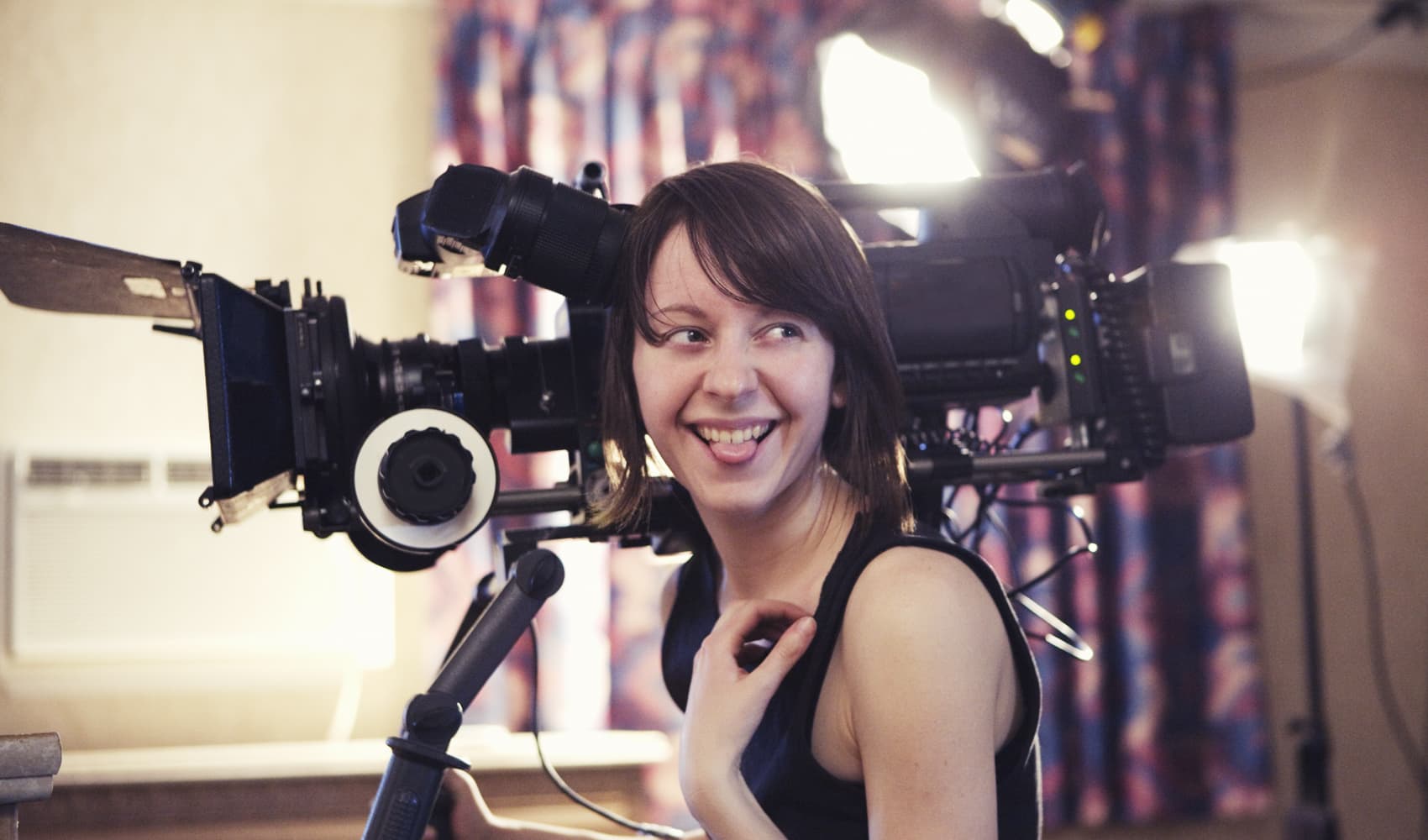
Some skills are best studied in a classroom; some are best taught on the job. Still others might be best learned with goggles on, in the metaverse.
College classes and internship programs are employing VR headsets to teach students and early talent the ropes of an office environment.
"By giving students access to this VR, you can place them in these different environments where they can see, 'Oh, this is what it would be like to be in a client meeting.' Or, 'This is what it means to be doing marketing,'" says Laura Bedalov, a customer success manager at talent research firm Cappfinity, which has launched a division specifically dedicated to professional VR applications. "They have the ability to see it before they go out and actually start looking for jobs."
Cappfinity sees VR not just as a way for young people to learn but also as a more direct tool for managers to assess people's skills.
Get Tri-state area news and weather forecasts to your inbox. Sign up for NBC New York newsletters.
"You put them through a VR simulation, and they can measure the skills of curiosity and collaboration, which then gives you a lot more evidence than what you're able to see on a piece of paper," says Cappfinity's head of customer success Jeannie Liakaris.

Cappfinity worked with the financial consulting firm Ernst & Young, for example, to launch a program where interns are supplied with VR headsets for a five-week hybrid program filled with fictional client meetings and simulated strategy development. After the headsets come off, the interns deliver a final presentation (in physical reality) to their managers and the rest of their cohort.
Money Report
To be sure, VR still has its skeptics. But as companies like Apple, Meta and Microsoft invest in virtual and augmented reality product development, it's possible that the metaverse may eventually go mainstream.
Here's what some people are saying about using VR in the workplace and the classroom:
A world of no consequences and no distractions
The University College Dublin has been using VR since September 2022 in an accredited undergraduate course called "Virtual Reality for Future Skills" where students navigate simulated workplace scenarios. The class is a part of UCD's Innovation Academy, which offers short modules for students looking to learn more about entrepreneurship and leadership.
Within UCD's virtual reality world, which was developed in partnership with Cappfinity, students may take on the role of a human resources employee choosing a job candidate to hire. Or they may act as the chief operating officer of a fictional company, making strategic business decisions that may not be easily taught in a traditional academic environment. They then gather in an in-person class to discuss their respective experiences.
So far, the course has been offered three times and 53 students have participated.
Some UCD students found that the VR learning experience provided a low-stakes environment for them to make professional blunders without the real-life consequences.
"It's a very good thing to have when you're younger, because you need to make those mistakes to then learn from it. And this gives it to you in a very peaceful, safe environment," says Alan O'Donnell, a 21-year-old UCD mechanical engineering student who took the VR class earlier this year. "There's a lot of freedom to learn without having to worry about the repercussions basically."
O'Donnell and his peers had their college experiences disrupted by the Covid-19 pandemic, which led many of their classes and internships to go online. He admits that learning and working remotely created lots of distractions. VR offers a fix.
"Working at home where you're just looking at a screen, it's very difficult to stay interested. It's very easy to get distracted," O'Donnell tells CNBC Make It. "A big plus with VR learning is that even though you could be at home, or it could be in an office, you're still immersed … When I'm in a virtual space, there's no Netflix."
It's 'way more cost-effective' than it used to be
For VR to go mainstream, the technology will have to get more affordable.
Maurice Knightly, education innovation lead at UCD's Innovation Academy who helped spearhead the VR class, says headset prices have gotten cheaper over time. In 2019, when UCD first started toying with the idea of a VR class, the goggles went for about $2,000 each, according to Knightly.
"Now, they're down to about 600 apiece," he says. The department purchased 20 headsets from VR company Pico for the students.
Cappfinity confirms that the costs of implementing its VR technology have become more manageable. That's because the company has developed a broader portfolio of standardized VR "rooms" that a client can more easily adapt for their own use rather than needing to develop bespoke VR landscapes for each client's needs.
"It's definitely way more cost-effective than it was, say, a few years ago," says Liakaris.
As the technology gets more affordable, she can see VR in the workplace "becoming more of a mainstream thing," but she doesn't think it will ever fully replace the in-person office environment.
Still, the pricing is somewhat inconsistent from gadget to gadget. Some headsets go for about $300 on Best Buy. Meanwhile, once Apple's Vision Pro augmented reality headset hits shelves next year, it will run for about $3,500.
Not everyone is bullish yet
Major tech players like Nintendo, Meta, Google, Microsoft and Sony have all poured some level of investment into VR experiments.
Still, not everyone is sold.
An April survey from Piper Sandler analysts found that only 4% of teenagers regularly use VR devices. A poll from last May found that at least a third of respondents were "more scared" of the metaverse than excited about its potential uses.
And VR is certainly not yet a sure business bet. Last year, Meta lost $2.8 billion on its VR branch, even as hype built around the idea of a metaverse. Apple executives have also expressed concerns about whether there is actually consumer appetite for the Vision Pro.
Cappfinity recognizes that not every employee will be on board for a VR workplace experience, but they are more focused on the clients who want to test its value.
"If you have to convince someone, it's like, 'Are you really sure you're ready for this?'" says Liakaris. "But if they've seen it, if they've heard of it, it's pretty much like, 'How can I make this work for me?'"
DON'T MISS: Want to be smarter and more successful with your money, work & life? Sign up for our new newsletter!
Take your business to the next level: Register for CNBC's free Small Business Playbook virtual event on August 2 at 1 p.m. ET to learn from premier experts and entrepreneurs how you can beat inflation, hire top talent and get access to capital.






